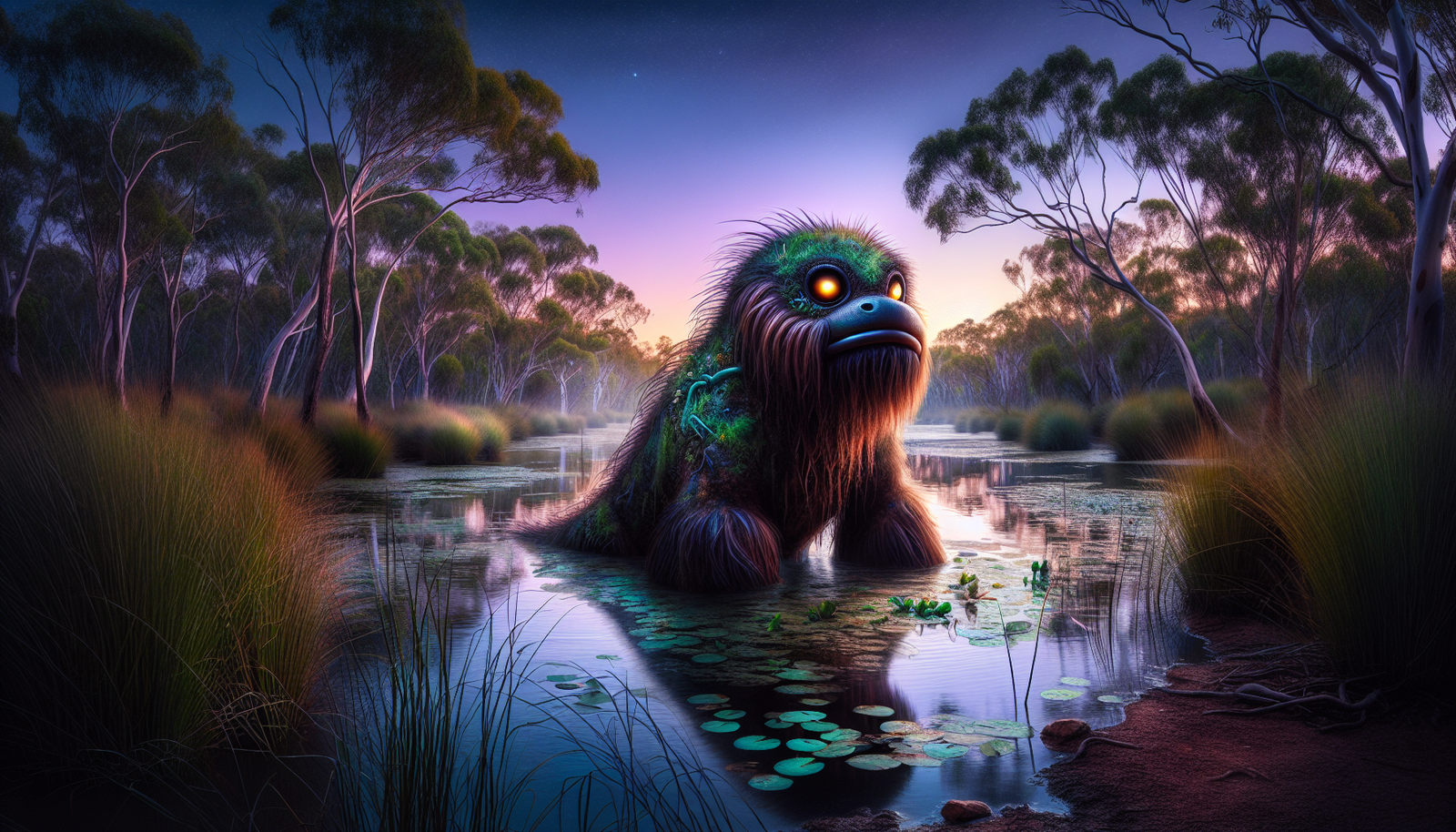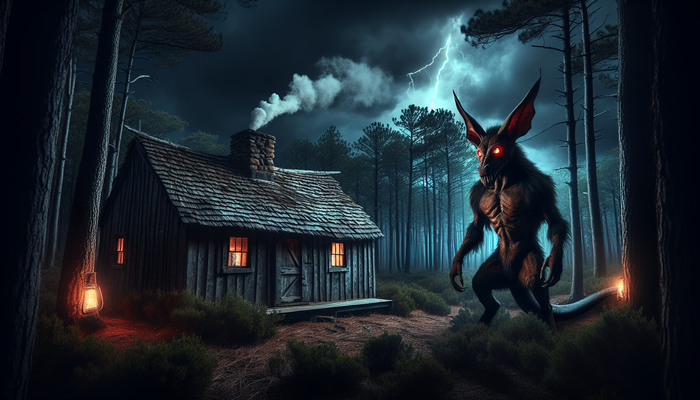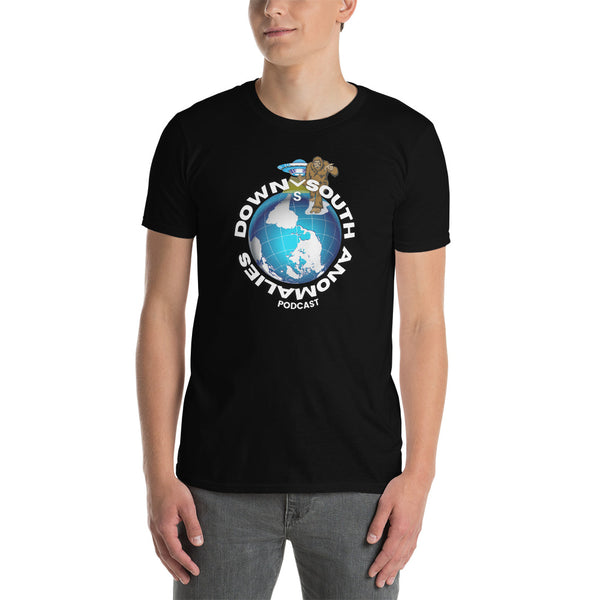Bunyip Legends of the Outback

By Ava Martinez, Cryptozoologist
As I delve into the rich tapestry of Australian folklore, I find myself captivated by the enigmatic figure of the Bunyip. This mysterious creature, deeply rooted in Aboriginal mythology, has haunted the waterways and imaginations of Australia for countless generations. The Bunyip is not merely a monster lurking in the depths; it is a complex symbol of cultural identity, environmental stewardship, and the intricate relationship between Indigenous peoples and their land.
In my research, I've discovered that the Bunyip is far more than a simple boogeyman used to frighten children. It is a multifaceted entity that embodies the spiritual connection between Aboriginal Australians and their environment, while also serving as a cautionary tale about the dangers of the natural world. As we explore the origins, variations, and cultural significance of the Bunyip, we'll uncover a story that spans thousands of years and continues to evolve in modern Australian society.
Origins of the Bunyip Legend
The story of the Bunyip begins in the mists of time, long before European settlers set foot on Australian soil. The creature's name itself is a window into its ancient origins. As I've learned through my studies, the word "Bunyip" is believed to have its roots in the Wemba-Wemba or Wergaia languages of southeastern Australia. These languages, spoken by Aboriginal communities for millennia, have gifted us this intriguing term that roughly translates to "devil" or "evil spirit."
However, it's crucial to understand that this translation may not fully capture the nuanced meaning of the Bunyip in Aboriginal culture. The concept of "evil" as we understand it in Western terms doesn't necessarily align with the Aboriginal worldview. Instead, the Bunyip often represents a force of nature – powerful, unpredictable, and deserving of respect rather than simply fear.
As I've dug deeper into the linguistic roots of the Bunyip, I've discovered a fascinating array of names used by different Aboriginal tribes across Australia. The Kianpraty, the Wowee, the Yaa-loo – each name carries its own subtle variations in meaning and cultural context. This diversity of nomenclature reflects the rich tapestry of Aboriginal cultures across the continent, each with its own unique relationship to the land and its spirits.
Emergence from Aboriginal Dreamtime
The Bunyip's emergence from Aboriginal Dreamtime stories is particularly intriguing. The Dreamtime, or "Tjukurpa" in some Aboriginal languages, is a complex spiritual belief system that explains the creation of the world, the landscape, and all living things. It's a framework for understanding the interconnectedness of all aspects of life and the environment. The Bunyip, as a creature of the Dreamtime, is not just a physical entity but a spiritual one, deeply woven into the fabric of Aboriginal cosmology.
In many Dreamtime stories, the Bunyip plays a role in shaping the landscape. Some tales describe how the creature's movements carved out riverbeds or created billabongs. Others portray the Bunyip as a guardian of sacred water sources, protecting them from those who would abuse or disrespect these vital resources. These stories serve not only as entertainment but as vital repositories of ecological knowledge, passed down through generations.
Oral Tradition and Cultural Significance
The oral tradition has been crucial in preserving the legend of the Bunyip. For thousands of years, Aboriginal elders have shared these stories around campfires, during ceremonies, and as part of everyday life. This oral history has allowed the Bunyip to evolve and adapt over time, taking on new meanings and significance as Aboriginal cultures have faced challenges and changes.
One particularly fascinating aspect of the Bunyip's oral tradition is how it has been used to teach important lessons about survival and respect for the environment. Many stories feature the Bunyip as a consequence for those who overfish, pollute waterways, or disrespect the land. These cautionary tales have served as a form of environmental education, instilling a deep sense of responsibility towards nature in Aboriginal communities.
As I've studied these origin stories, I've been struck by the sophistication of this storytelling tradition. The Bunyip is not a simple monster, but a complex character that embodies the unpredictable and sometimes dangerous aspects of the natural world. It's a reminder that nature, while beautiful and life-giving, can also be fierce and unforgiving.
The longevity of the Bunyip legend is a testament to its cultural significance. Despite centuries of colonization and the suppression of Aboriginal culture, the Bunyip has persisted in the collective memory of Indigenous Australians. This resilience speaks to the power of storytelling and the enduring connection between Aboriginal people and their ancestral lands.
Physical Descriptions and Variations
One of the most fascinating aspects of the Bunyip legend is the incredible diversity of physical descriptions attributed to this mysterious creature. As I've pored over countless accounts, both ancient and modern, I've been struck by the kaleidoscopic array of forms the Bunyip is said to take. This variability is not just a quirk of the legend; it's a key feature that speaks to the creature's adaptability and its deep connection to the diverse landscapes of Australia.
Common Physical Traits
Let's start with some of the most common physical traits ascribed to the Bunyip:
- Size: Significantly larger than a human, sometimes described as big as a horse or even larger.
- Body: Often bulky and powerful, well-suited to its aquatic habitat.
- Swimming ability: Excellent swimmer, able to move swiftly through water with ease.
- Limbs: Sometimes described as having flippers or webbed feet.
Head and Face Variations
The Bunyip's head is described in various ways:
- Dog-like face with sharp teeth and a powerful jaw
- Horse-like face with a long face and large, expressive eyes
- Emu-like appearance with a long neck and a bird-like beak
One of the most striking features often attributed to the Bunyip is its eyes, frequently described as glowing or luminous, capable of piercing through the darkness of night.
Body Covering
The Bunyip's body covering varies in descriptions:
- Dark fur or shaggy hair, often matted with swamp weeds and mud
- Reptilian appearance with scales or a slick, wet hide
- Combinations of fur and scales
Additional Features
Other notable features sometimes mentioned include:
- Tusks or horns, adding an ancient and primordial quality
- Tail: Descriptions range from long and powerful to modest or absent
- Unusual forms: Some accounts describe the Bunyip as a giant starfish-like creature
Regional Variations
Descriptions often vary by region:
- Coastal communities might describe a more seal-like Bunyip
- River-dwelling communities might envision a creature more akin to a giant fish or reptile
- Murray-Darling Basin: Often described with a long neck and small head, reminiscent of a plesiosaur
The Bunyip's Call
The sounds attributed to the Bunyip also vary:
- Loud, booming cry echoing across the landscape at night
- Subtle sounds like the lapping of water or a low, ominous growl
Evolution of Descriptions
The Bunyip's description has evolved over time, especially since European contact. Early settler accounts often tried to reconcile Aboriginal descriptions with animals they were familiar with, leading to comparisons with seals, hippopotamuses, and even extinct creatures like the Diprotodon.
Cultural Significance
As we delve deeper into the world of the Bunyip, it becomes clear that this creature is far more than just a mythical monster. The Bunyip holds a profound cultural significance within Aboriginal societies, serving as a powerful symbol that embodies complex ideas about the relationship between humans, nature, and the spiritual world.
Guardian of Waterways
The Bunyip often serves as a guardian of waterways in Aboriginal stories. This role is particularly significant in the arid Australian landscape, where water is a precious and often scarce resource. The Bunyip acts as:
- A deterrent to those who might overexploit or pollute vital water sources
- A spiritual custodian maintaining the balance between physical and spiritual realms
- A powerful entity believed to control water levels or influence weather in some traditions
Symbol of Environmental Respect
Many Bunyip stories carry messages about the importance of living in harmony with nature:
- Cautionary tales about disrespecting the environment
- Lessons on the consequences of overfishing, polluting waterways, or entering sacred sites without permission
- A tool for instilling and reinforcing environmental ethics within Aboriginal communities
Role in Aboriginal Spirituality
The Bunyip plays a significant role in Aboriginal spirituality:
- Often seen as a manifestation of the Dreamtime
- Bridges the gap between the tangible world and the realm of the ancestors
- Featured in creation myths explaining the origin of natural landmarks
Cultural Education and Knowledge Transmission
Bunyip stories serve as a powerful tool for cultural education:
- Teaching children about the dangers of the natural world
- Emphasizing the importance of respecting cultural taboos
- Highlighting the consequences of disregarding the wisdom of elders
Symbol of the Unknown and Mysterious
The Bunyip represents all that is yet to be discovered or understood in the vast Australian landscape:
- Embodies the sense of wonder and respect for the natural world
- Reminds us of forces in nature beyond our control or comprehension
- Encourages humility in the face of the unknown
Role in Art and Storytelling
The Bunyip plays a significant role in Aboriginal art and storytelling traditions:
- Depictions found in rock art, bark paintings, and other traditional art forms
- Serves as a means of cultural expression and identity
- Continues to evolve and adapt through art and storytelling
Association with Initiation Rites
In some Aboriginal communities, the Bunyip is associated with initiation rites and coming-of-age ceremonies:
- Used in rituals involving facing one's fears and proving courage
- Symbolizes the transition to adulthood and taking on adult responsibilities
Symbol of Australian National Identity
In recent times, the Bunyip has become a symbol of Australian national identity:
- Featured on postage stamps, in literature, and popular culture
- Adopted as a uniquely Australian icon
- Used in environmental conservation efforts as a mascot or symbol
Linguistic Impact
The Bunyip has shaped Australian English:
- Used as a term to describe something mythical or hard to believe
- Phrases like "Bunyip aristocracy" used in political discourse
European Encounters and Misinterpretations
The arrival of European settlers in Australia marked a significant turning point in the story of the Bunyip. As these newcomers encountered Aboriginal cultures and their rich mythology, they became fascinated by tales of strange creatures inhabiting the unfamiliar Australian landscape. However, this fascination often led to misunderstandings and misinterpretations that would shape the Bunyip legend in new and unexpected ways.
Initial Reactions and Beliefs
When European settlers first heard tales of the Bunyip:
- Many were perplexed by descriptions of a creature unlike anything they had encountered before
- Some believed the Bunyip might be a real, undiscovered animal
- This belief was not unreasonable given the context of Australia's unique fauna
Early Settler Accounts
Early settler accounts of the Bunyip often tried to reconcile Aboriginal descriptions with familiar animals:
- Comparisons were made to seals, hippopotamuses, and extinct creatures like the Diprotodon
- These attempts led to hybrid descriptions blending elements of various known animals
Notable Incidents
Several notable incidents fueled European interest in the Bunyip:
- William Buckley's account in his 1852 biography
- The 1845 Geelong Advertiser article "The Bunyip, or Kine Pratie"
- The 1846 discovery of a strange skull on the Murrumbidgee River
Cultural Misunderstandings
European settlers often misunderstood or overlooked the deeper cultural and spiritual significance of the Bunyip:
- The complex symbol of environmental stewardship was often reduced to a simple monster story
- This led to a new, hybrid version of the Bunyip reflecting cultural mixing in colonial Australia
Scientific Speculations
The scientific community became involved in the Bunyip phenomenon:
- Some researchers speculated that the Bunyip might be a surviving population of prehistoric animals
- Others suggested it might be a new species of pinniped adapted to freshwater environments
Evolution of the Legend
As the 19th century progressed:
- The idea of the Bunyip as a real, undiscovered animal began to fade
- The legend took on a life of its own in European-Australian culture
- The term "Bunyip" entered Australian English as a synonym for "impostor" or "pretender"
Positive Outcomes
Despite misinterpretations, European fascination with the Bunyip had some positive effects:
- Sparked interest in Aboriginal culture and traditions among some settlers
- Led to early attempts at cultural documentation and preservation
- Became a point of common ground between Aboriginal and settler cultures
Historical Sightings and Evidence
The search for tangible evidence of the Bunyip's existence has been a fascinating and often controversial aspect of Australian history. While the creature remains firmly in the realm of legend, there have been numerous reported sightings and alleged discoveries over the years that have fueled speculation and debate.
Early Encounters
- 1818: Hamilton Hume discovers large bones near Lake Bathurst, NSW
- 1845: The Geelong Advertiser publishes "The Bunyip, or Kine Pratie" article
- 1846: Discovery of the "Bunyip skull" on the Murrumbidgee River
Notable Sightings
- 1857: Edwin Stocqueler's alleged sightings along the Murray and Goulburn rivers
- Numerous reports in southeastern colonies during mid-19th century
Physical Evidence
- The Challicum Bunyip geoglyph near Ararat, Victoria (recorded in 1851)
- Fossil discoveries of extinct Australian megafauna
Modern Sightings
While less common, occasional reports still emerge from rural areas, describing:
- Large, dark shapes seen in waterways
- Strange noises heard near billabongs
Scientific Perspective
The scientific community generally treats modern Bunyip sightings with skepticism, but the legend continues to capture public imagination.
The Bunyip in Modern Culture
As we venture into the modern era, the Bunyip has undergone a fascinating transformation. From a fearsome creature of Aboriginal legend to a subject of colonial fascination, the Bunyip has now evolved into a multifaceted cultural icon that permeates various aspects of contemporary Australian society.
Children's Literature
The Bunyip has transitioned from a terrifying predator to a more benign, often friendly creature in children's books:
- "The Bunyip of Berkeley's Creek" by Jenny Wagner (1973)
- Reimagining of the Bunyip as a misunderstood and lovable character
Visual Arts
The Bunyip has found a place in Australian visual arts:
- Traditional Aboriginal dot paintings
- Modern sculptures and digital art
- Diverse interpretations reflecting the creature's fluid concept
This evolution reflects changing attitudes towards Aboriginal culture, environmental conservation, and national identity, ensuring the Bunyip's continued relevance in Australian culture.
From Bigfoot to UFOs: Hangar 1 Publishing Has You Covered!
Explore Untold Stories: Venture into the world of UFOs, cryptids, Bigfoot, and beyond. Every story is a journey into the extraordinary.
Immersive Book Technology: Experience real videos, sights, and sounds within our books. Its not just reading; its an adventure.



























